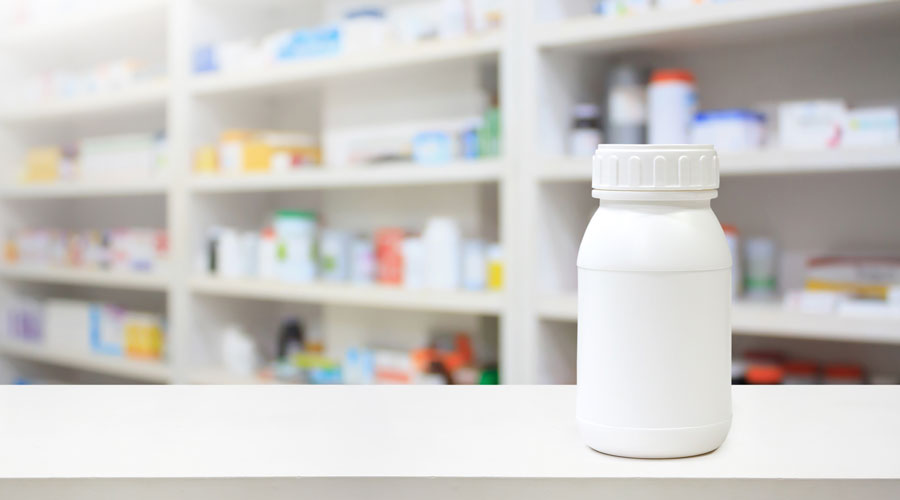Inside: Increase your margins with simple steps to reduce pharmacy costs.
When it comes to pharmacy expenses, little things add up. Every dollar you spend on credit card fees or ineffective marketing campaigns is a dollar that you can’t use to reinvest in your pharmacy in bigger ways.
In the effort to reduce pharmacy costs, you don’t have to cut quality service for your patients. There are big and small ways you can trim the fat and make your business more financially secure.
1. Create a budget
A simple money-saving technique, budgeting falls by the wayside for many small businesses. But it’s an essential tool to prevent overspending. With a dedicated allotment to each facet of your business, you’ll know when to say no to the next marketing or sales offer that you might otherwise have gone in for.
At the very least, it forces you to crunch the numbers before any decision involving money. If your pharmacy can benefit from an automatic pill counter, you’ll be able to adjust your spending, or forecast earnings, to be sure you can afford it.
A budget also reveals areas where you could tighten your wallet or that you could cut out entirely. Did you know you’d been paying $15 every month for that subscription? Were you aware of how much your average utility bill cuts into your overhead? A budget enables you to optimize the cash you have for the greatest benefit. And it doesn’t take that much work.
2. Go green
Making your pharmacy more environmentally friendly isn’t just good for the world—it’s good for your wallet, too.
Replace your current light bulbs with energy-efficient bulbs, which use 25 to 80 percent less energy. If your building gets a lot of natural light, you can even turn your overhead lights off during the brightest part of the day.
Here’s a guide to light bulbs with a full breakdown of pros and cons.
If you have sizable heating and cooling bills, investing in a programmable thermostat can help you save money in the long run. Set a schedule so your heat or air conditioning isn’t running at full blast while the pharmacy is closed at night, and then have it readjust in the morning.
3. Examine credit card fees
Every time a patient pays with a credit card, your pharmacy is hit with a processing fee. This fee can be as much as 5 percent. Since around 26 percent of purchases are made with credit cards, this can add up.
Your payment processor determines how much you pay in processing fees, so shop around to make sure you’re getting the best deal.
Payment processors also charge higher fees when credit card information is typed in manually instead of swiped because the risk of fraud is higher. Minimizing manual entries can save money.
4. Avoid overtime
If you have full-time employees who are consistently working more than 40 hours a week, you should re-examine your scheduling.
Building a more efficient schedule can help you avoid paying overtime and even save you money in other places. Schedule more team members during the pharmacy’s rush hours and fewer when the pharmacy is quiet.
Make it easy for employees to access the schedule and trade hours if they need to. This makes it less likely that someone will call in last minute, forcing you to find a replacement.
5. Automate
Pharmacy automation tools like robotics can be a big investment — but they can also reduce costs. Robotics can handle a significant volume of your prescriptions, meaning you can worry a little less about coverage in the pharmacy and run a leaner staff.
There are smaller ways to automate, as well. Use Hootsuite or Buffer to automate your social media or services like Brightbook to automate accounting. These types of services save you time, which means you’re able to be more productive in other parts of the pharmacy.
6. Re-evaluate inventory management
Most of your pharmacy expenses revolve around your inventory. If you aren’t wise about how you manage that inventory, you could be burning cash unnecessarily.
If you order too much, you’re faced with holding costs. Your money is tied up in the inventory that’s sitting on the shelf instead of being available as cash. If you order too little, you risk running out and losing out on sales.
There are several different methods to perfecting your inventory management, but the key is to have the smallest amount of inventory possible without risking running out. You can learn more about the different methods here.
7. Advertise efficiently
Don’t waste marketing dollars on efforts that aren’t working. If you sent out a coupon in a direct mail campaign but no one ever brought the coupon into the pharmacy, it wasn’t an effective marketing tactic.
Similarly, you should be able to measure the success of your digital marketing efforts to realize if they are a wise investment. Have a specific goal in mind — like increasing website traffic or decreasing your bounce rate — and track those metrics to see if your efforts are working.
Remember, you don’t have to pay a lot of money on advertising to increase your pharmacy’s visibility. Organically developing a social media presence can be a great, free way to get your name out there.
8. Eliminate unnecessary services
Go through your monthly expenses and ask yourself what you really need. If you’re still paying for a dedicated fax line, for example, it might be time to cut the cord.
There’s also a chance you’re paying for a service that you could be getting for free — like customer relationship management software or email marketing.
Whenever possible, take things into your own hands. You don’t need to pay a service to back up your data for you when it’s easy enough to do yourself.
9. Get a better contract
To achieve a larger profit margin on your prescription inventory and reduce your overall costs, you may need to go back to the drawing board on your contract. With your cost of goods being your pharmacy’s largest investment, you stand to save the most by getting your pharmaceuticals at lower prices—and those are determined by your wholesaler contract, which typically locks you in for years.
How long have you been using the same wholesaler? Even if they’ve improved your contract each year, chances are certain that you can do better by taking your business into the open market. Get bids from multiple wholesalers so they have to compete for your business. You may end up with the same one, but you’ll also end up with a better contract.
As an individual independent pharmacy, you might not have the power to negotiate, but by joining a group purchasing organization like ProfitGuard®, you can gain the buying power of a regional chain. ProfitGuard also does the negotiating for you, and their expertise means they can get you better terms than you could get by yourself. Unlike other buying groups, ProfitGuard isn’t tied to a single wholesaler, so it can find you the best offer.
Either way, you should understand how wholesalers actually price your goods. It’s anything but straightforward, and learning the ins and outs will help you make the most of it. Numerous incentive structures built into your contract affect your final cost of goods substantially.
10. Max out rebates
You don’t have much control over how much prescription drugs cost, but you can get the most out of your primary wholesaler.
By hitting a certain generic volume every month, you can ensure that your pharmacy gets the biggest rebate possible. While it might be tempting to buy from whichever secondary supplier offers the cheapest prices, you could be losing out on even more money if you don’t purchase enough generics from your primary supplier.
ProfitGuard also provides proprietary purchasing tools that maximize wholesaler rebates and item-by-item savings automatically. ProfitGuard members have averaged between $70,800 and $212,400 in annual savings on their cost of goods.
“It’s the industry game-changer for the independent pharmacy owner or operator,” says Huy Duong, owner of Dale’s Pharmacy in Colorado. “There’s nothing out there like it on the market.”
A Member-Owned Company Serving Independent Pharmacies
PBA Health is dedicated to helping independent pharmacies reach their full potential on the buy-side of their business. Founded and owned by pharmacists, PBA Health serves independent pharmacies with group purchasing services, wholesaler contract negotiations, proprietary purchasing tools, and more.
An HDA member, PBA Health operates its own NABP-accredited secondary wholesaler with more than 6,000 SKUs, including brands, generics, narcotics CII-CV, cold-storage products, and over-the-counter (OTC) products — offering the lowest prices in the secondary market.












